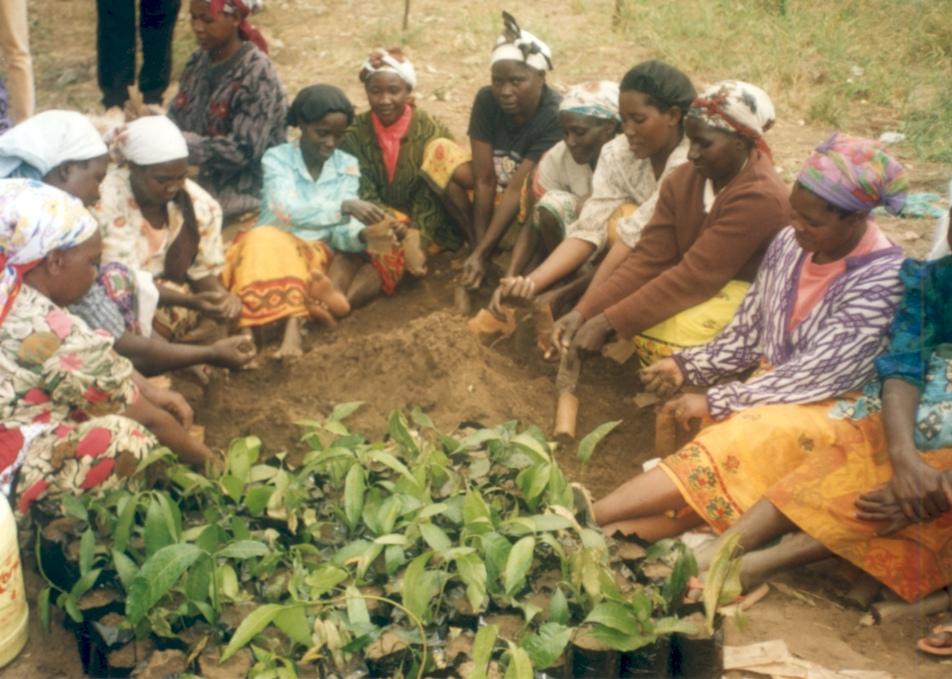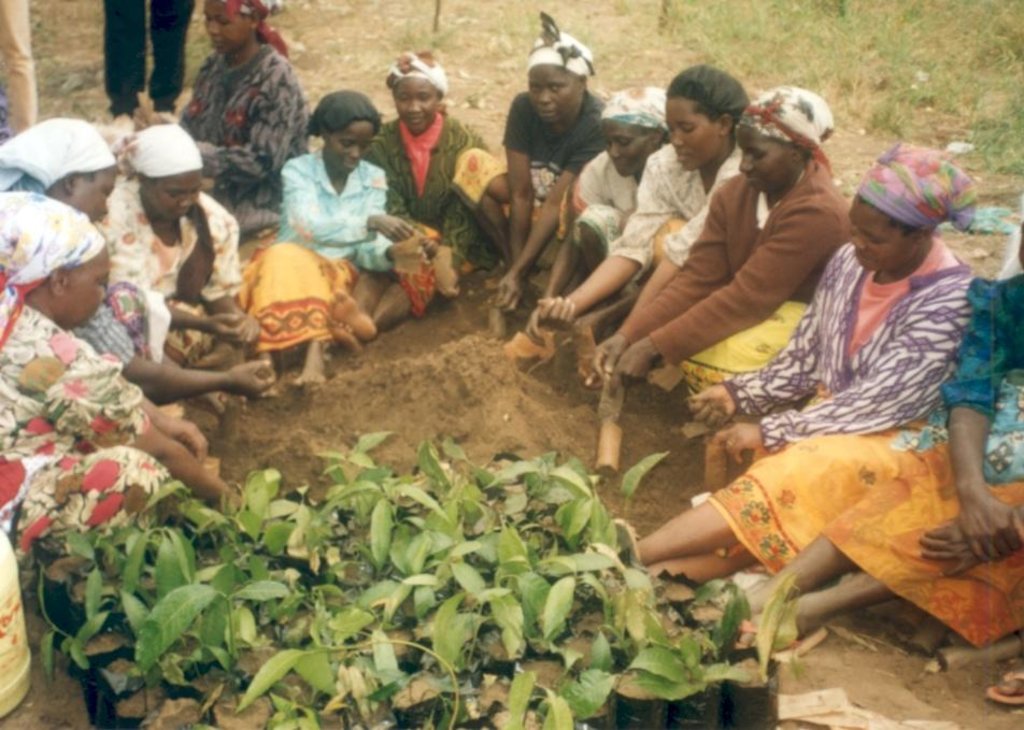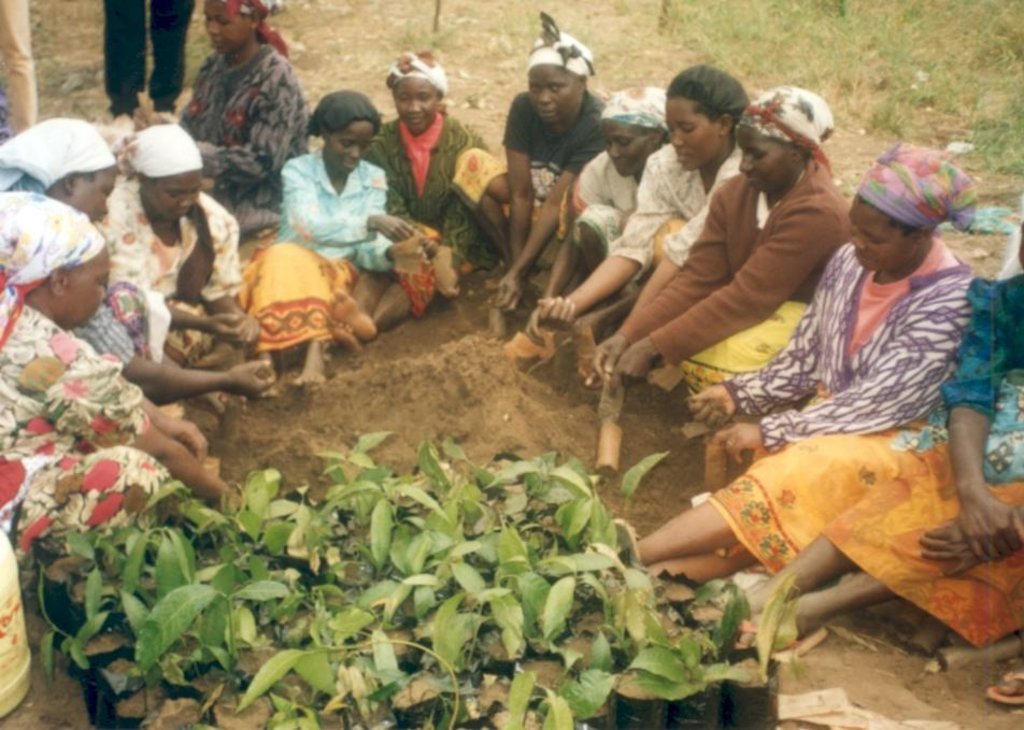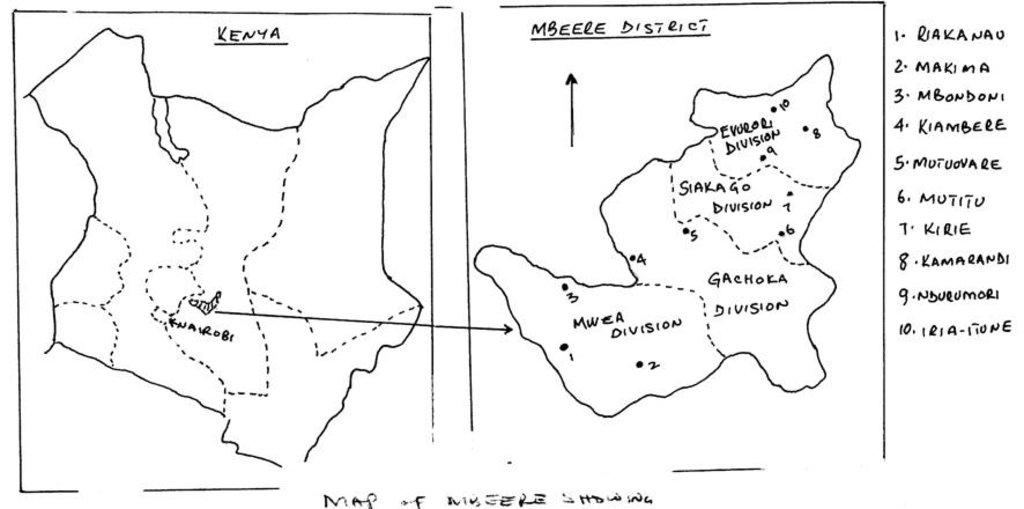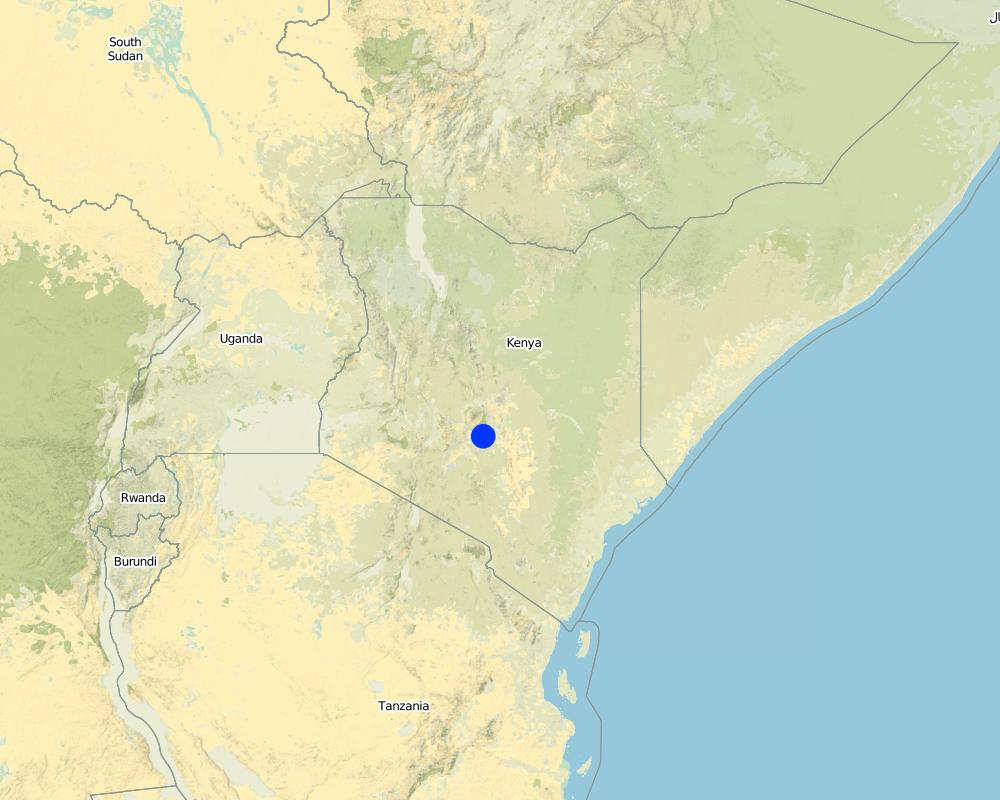Cash for Work [كينيا]
- تاريخ الإنشاء:
- تحديث:
- جامع المعلومات: Boniface, Mutegi Birichi
- المحرر: –
- المُراجع: Fabian Ottiger
approaches_2360 - كينيا
عرض الأقسام
توسيع الكل طي الكل1. معلومات عامة
1.2 تفاصيل الاتصال بالأشخاص الرئيسيين لمصدر المعلومات والمؤسسات المعنية بتقييم وتوثيق النهج
الشخص (الأشخاص) الرئيسي لمصدر المعلومات
متخصص في الإدارة المستدامة للأراضي:
متخصص في الإدارة المستدامة للأراضي:
Wamuyu Joseph
016120368
Diocese of Embu
Box 884
كينيا
متخصص في الإدارة المستدامة للأراضي:
Ireri Vincent
016120368
Diocese of Embu
Box 884
كينيا
اسم المؤسسة (المؤسسات) التي سهلت توثيق/تقييم النهج (إذا كان ذلك على صلة)
Embu Diocese - كينيا1.3 الشروط المتعلقة باستخدام البيانات الموثقة من خلال WOCAT
يوافق جامع المعلومات والشخص (لاشخاص) الرئيسي لمصدر المعلومات على الشروط المتعلقة باستخدام البيانات الموثقة من خلال WOCAT:
نعم
2. وصف نهج الإدارة المستدامة للأراضي
2.1 وصف موجز للنهج
Giving cash incentives to farmers for them to undertake soil and water conservation
2.2 وصف تفصيلي للنهج
وصف تفصيلي للنهج:
Aims / objectives: Overall purpose of reducing vulnerability to famine and recurrent drought in Mbeere district. Specific objectives were to increase access to cash to meet basic needs of some 2000 most vulnerable households for a period of 4 months and to increase adoption of improved drought tolerant crop varieties for some 2000 most vulnerable households for aperiod of 9 months.
Methods: Methods of delivery were cash for work in construction of SWC structures including rural access road improvement and provision of access to planting seeds, technical knowhow and drought tolerant crop varieties.
Stages of implementation: Stages of implementation were sensitization and awareness creation of key stake holders and land users, Recruitment of technical staff and their training , selection of the beneficiaries and formation of groups ( 10 groups each comprising 20 farmers ) per work site, Election of focal area committees and their training, actual implementation of the agreed activities and finally monitoring and evaluation.
Role of stakeholders: Role of the participants was to provide labour, undertake good crop husbandry practices on the conserved land and participate in meetings, field days and group activities.
2.3 صور عن النهج
2.5 البلد/المنطقة/المواقع التي تم تطبيق النهج فيها
البلد:
كينيا
المنطقة/الولاية/المحافظة:
Mbeere Distict In Eastern Province
Map
×2.6 تواريخ بدء وإنهاء تنفيذ النهج
أشر إلى سنة البدء:
2000
سنة الإنهاء (إذا لم يعد النهج مطبقًا):
2002
2.7 نوع النهج
- قائم على مشروع/برنامج
2.8 الغايات/الأهداف الرئيسية للنهج
The Approach focused mainly on SLM with other activities (*Water harvesting for crop productioin *Access roads improvement *Fruit trees establishment *Increased adoption of improved drought tolerant crop varieties)
*Increase access to cash so as to meet basic needs of the most vulnerable households *Consruction of soil and water conservation measures including improvement of access roads in the focal area ( work site ). *Increased adoption of improved drought tolerant crop varieties.
The SLM Approach addressed the following problems: * low land productivity due to soil erosion and drought *Migration of farmers to look for work during drouht speells *Poor access roads * Lack of seeds for improved drought tolerant crop varieties
2.9 الظروف التي تمكن أو تعيق تنفيذ التقنية/التقنيات المطبقة بموجب النهج
توفر/الوصول إلى الموارد والخدمات المالية
- معيق
migration to look for off farm employment
Treatment through the SLM Approach: cash incentives to make the farmers remain in their farms and do conservation
الإطار القانوني (حيازة الأراضي، وحقوق استخدام الأراضي والمياه)
- تمكين/تمكيني
The existing land ownership, land use rights / water rights greatly helped the approach implementation: Individual land ownership encouraged the farmers to invest on their through various conservation efforts
المعرفة حول الإدارة المستدامة للأراضي، والوصول إلى الدعم الفني
- معيق
Lack of adquate technical staff to lay out soil and water conservation measures
Treatment through the SLM Approach: Training work site (focal area) farmer commitees to do lay out work ie paraprofessionals.
غير ذلك
- معيق
inadequate family labour on the farms
Treatment through the SLM Approach: Organise farmers into conservation groups ie communal work
3. المشاركة وأدوار الأطراف المعنية
3.1 أصحاب المصلحة المعنيون بالنهج وأدوارهم
- مستخدمو الأراضي المحليون/المجتمعات المحلية
Working land useres where work is equally divided between men and women
The programme targeted the resource poor land users ie those that were already receiving food relief from the World food Programme (WFP).
- منظمة غير حكومية
Diocese of Embu
- الحكومة الوطنية (المخططون، صانعو القرار)
Ministry of agriculture
- منظمة دولية
Catholic Relief Services (CRS)
3.2 انخراط مستخدمي الأراضي المحليين/المجتمعات المحلية في المراحل المختلفة للنهج
| انخراط مستخدمي الأراضي المحليين/المجتمعات المحلية | حدد من شارك وصف الأنشطة | |
|---|---|---|
| المبادرة/التحفيز | سلبي | public meetings; Series of work site meetings to explain the programme to the land users |
| التخطيط | تفاعلي | Mainly: public meetings; partly: workshops/seminars; Workshops for key staholders held and training of the programme staff conducted |
| التنفيذ | الدعم الخارجي | Mainly: casual labour; partly: responsibility for major steps; Wor site committees were responsible for organising the farmers day to day activities |
| الرصد/التقييم | تفاعلي | Mainly: measurements/observations; partly: public meetings, reporting; Focal area committees were assisting the technical staff in taking measurements compiling reports |
| Research | تفاعلي | on-farm; The mother (16 varieties ) and baby (3 varieties) trials were managed by the farmers |
3.4 اتخاذ القرار بشأن اختيار تقنية/تقنيات الإدارة المستدامة للأراضي
حدد من الذي قرر اختيار التقنية/التقنيات التي سيتم تنفيذها:
- متخصصون في الإدارة المستدامة للأراضي بشكل أساسي، بعد التشاور مع مستخدمي الأراضي
اشرح:
Consultative. Meetings were held with the land users where the activities to be undertaken were discussed and agreed on.
Decisions on the method of implementing the SLM Technology were made by mainly by SLM specialists with consultation of land users. Consultative. The method was chosen by the SWC specialists but discussed and adopted by the farmers
4. الدعم الفني وبناء القدرات وإدارة المعرفة
4.1 بناء القدرات/التدريب
هل تم تقديم التدريب لمستخدمي الأراضي / الأطراف المعنيين الآخرين؟:
نعم
حدد من تم تدريبه:
- مستخدمو الأراضي
- extensionists/trainers
شكل التدريب:
- في العمل
- من مزارع إلى مزارع
المواضيع المغطاة:
Methods of soil conservation; Water harvesting for crop production; Lay out of soil conservation structures and tree planting
4.2 خدمة استشارية
هل يملك مستخدمو الأراضي وصولا إلى خدمة استشارية؟:
نعم
حدد ما إذا كانت الخدمة الاستشارية متوفرة:
- في حقول مستخدمي الأراضي
- في مراكز دائمة
وصف/تعليقات:
Name of method used for advisory service: catchment (focal area) approach; Key elements: demonstrations, field days, trial plots and individual farm visits; 1) Mainly: government's existing extension system, Partly: projects own extension structure and agent 2) Mainly: government's existing extension system, Partly: projects own extension structure and agent; Extension staff: mainly government employees 3) Target groups for extension: land users; Activities: lay out work, agroforestry, individual tree nurseries establishment
Advisory service is quite adequate to ensure the continuation of land conservation activities; proramme used the existing extension staff within the focal areas. These staff arec still in place continously delivering extension services
4.3 تعزيز المؤسسات (التطوير التنظيمي)
هل تم إنشاء أو تعزيز مؤسسات من خلال هذا النهج؟:
- نعم، باعتدال
حدد المستوى (المستويات) التي تم فيها تعزيز أو إنشاء المؤسسات:
- محلي
حدد نوع الدعم:
- بناء القدرات/التدريب
- logistical surpport-transport
4.4 الرصد والتقييم
هل يشكل الرصد والتقييم جزءا من النهج؟:
نعم
التعليقات:
technical aspects were regular monitored
economic / production aspects were regular monitored
area treated aspects were regular monitored by 0 through measurements; indicators: None
no. of land users involved aspects were None monitored by 0 through None; indicators: None
There were no changes in the Approach as a result of monitoring and evaluation: None
4.5 البحوث
هل كانت البحوث جزءًا من النهج؟:
نعم
حدد المواضيع:
- تكنولوجيا
أعط تفاصيل إضافية وأشر إلى من قام بالبحوث:
adaptive onfarm trials carried out on new drought tolerant crop varieties
Research was carried out on-farm
5. التمويل والدعم المادي الخارجي
5.1 الميزانية السنوية لمكون الإدارة المستدامة للأراضي في النهج المذكور
إذا لم تكن الميزانية السنوية الدقيقة معروفة، قم بالإشارة إلى نطاقها:
- 1,000000-100،000
التعليقات (على سبيل المثال المصادر الرئيسية للتمويل/الجهات المانحة الرئيسية):
Approach costs were met by the following donors: international non-government (Catholic relief services): 99.0%; local community / land user(s) (Depreciation of farm tools): 1.0%
5.2 الدعم المالي/المادي المقدم لمستخدمي الأراضي
هل حصل مستخدمو الأراضي على دعم مالي/ مادي لتنفيذ التقنية/ التقنيات؟:
نعم
إذا كانت الإجابة بنعم، حدد نوع (أنواع) الدعم والشروط والمزودين:
In addition to the cash the land users were given seeds and fruit tree seedlings
5.3 إعانات لمدخلات محددة (بما في ذلك العمالة)
- معدات
| حدد المدخلات التي تم دعمها | إلى أي مدى | حدد الإعانات |
|---|---|---|
| الآلات | ||
| أدوات | ||
- زراعة
| حدد المدخلات التي تم دعمها | إلى أي مدى | حدد الإعانات |
|---|---|---|
| بذور | ممول جزئيا | |
- بنى تحتية
| حدد المدخلات التي تم دعمها | إلى أي مدى | حدد الإعانات |
|---|---|---|
| Community infrastructure | ||
التعليقات:
In addition to the cash the land users were given seeds and fruit tree seedlings
5.4 الائتمان
هل تم توفير ائتمان في إطار نهج أنشطة الإدارة المستدامة للأراضي؟:
كلا
6. تحليل الأثر والتصريحات الختامية
6.1 آثار النهج
هل ساعد النهج مستخدمي الأراضي على تنفيذ وصيانة تقنيات الإدارة المستدامة للأراضي؟:
- لا
- نعم، قليلا
- نعم، باعتدال
- نعم، إلى حد كبير
incorporation of water harvesting techniques in crop production and manure application
هل أدى النهج إلى تحسن في مسائل حيازة الأراضي / حقوق المستخدمين التي أعاقت تنفيذ تقنيات الإدارة المستدامة للأراضي؟:
- لا
- نعم، قليلا
- نعم، باعتدال
- نعم، إلى حد كبير
Did other land users / projects adopt the Approach?
- لا
- نعم، قليلا
- نعم، باعتدال
- نعم، إلى حد كبير
The approach to spread to several other districts
6.3 استدامة أنشطة النهج
هل يمكن لمستخدمي الأراضي المحافظة على استدامة ما تم تنفيذه من خلال النهج (بدون دعم خارجي)؟:
- نعم
6.4 نقاط قوة/مزايا النهج
| نقاط القوة/ المزايا/ الفرص من وجهة نظر مستخدمي الأراضي |
|---|
| training (How to sustain/ enhance this strength: more field days and farmer tours) |
| provision of seeds and seedlings (How to sustain/ enhance this strength: setting up of bulking plots and group tree nurseries) |
| cash provision (How to sustain/ enhance this strength: intensify production of cash generating enterprises especially fruit trees like mangoes and pawpaws) |
| نقاط القوة/ المزايا/ الفرص من وجهة نظر جامع المعلومات أو غيره من الاشخاص الرئيسيين لمصدر المعلومات |
|---|
| group approach (How to sustain/ enhance this strength: training of the committees, encourage more group activities and projects) |
| involvement and use of locally based extension staff |
6.5 نقاط الضعف/ العيوب في المنهج وطرق التغلب عليها
| نقاط الضعف/ المساوىء/ المخاطر من وجهة نظر مستخدم الأراضي | كيف يمكن التغلب عليها؟ |
|---|---|
| lack of appropriate tools | provision of suitable tools as the condition of the area dictate |
| نقاط الضعف/ المساوىء/ المخاطر من وجهة نظر جامع المعلومات أو غيره من الاشخاص الرئيسيين لمصدر المعلومات | كيف يمكن التغلب عليها؟ |
|---|---|
| use of cash as incentive | should be phased out gradually |
| low land user involvement in the initial stages | use of participatory methods |
7. المراجع والروابط
7.2 المراجع للمنشورات المتاحة
العنوان، المؤلف، السنة، النظام القياسي الدولي لترقيم الكتب ISBN:
Catchment planning- by E.Mwenda , MOA&RD-Nairobi
Mbeere district development plan 1997-2002
الروابط والوحدات المواضيعية
توسيع الكل طي الكلالروابط
لا يوجد روابط
الوحدات المواضيعية
لا يوجد وحدات مواضيعية


